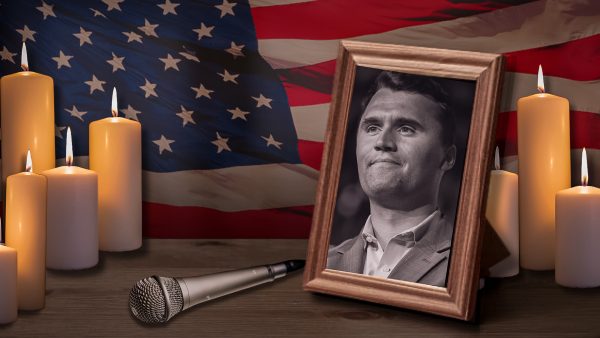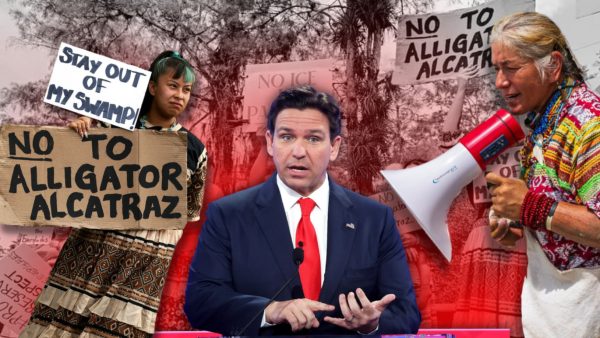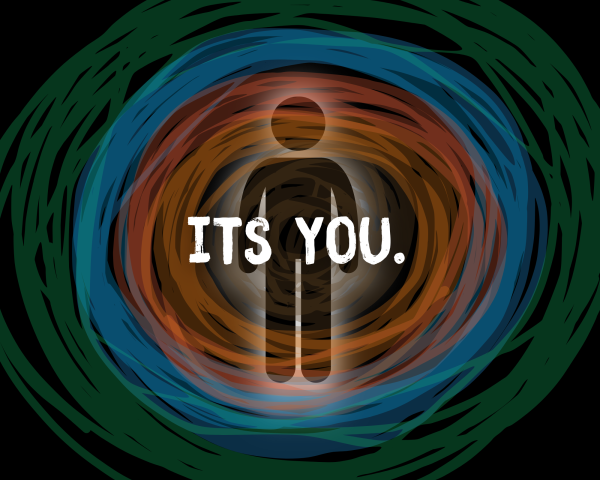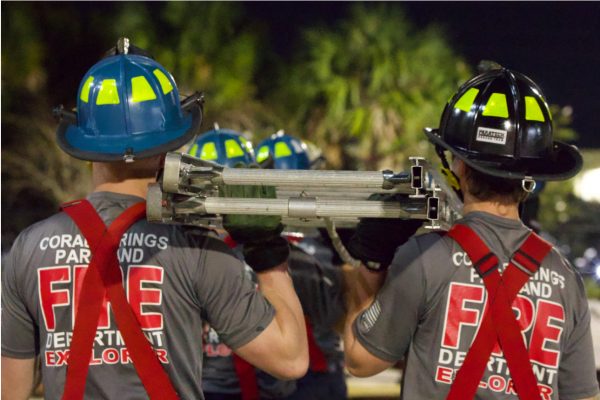Florida government begins distribution of COVID-19 vaccine
Note: The number of vaccines administered and confirmed COVID-19 cases changes on a daily. The numbers recorded in this article are of the latest numbers updated on February 19th, 2021.
Disclaimer: This article is not attempting to influence any person’s decision to receive the COVID – 19 vaccine. This article was made based on information from the Coral Springs Department of Health and the Coral Springs City Government and the CDC website, amongst other trusted sites, listed down below.
Distribution of the COVID-19 vaccine in Florida
Last year December, Governor Ron DeSantis of Florida announced a statewide distribution of the Moderna, NIAID vaccine, expected to aid in the fight against the COVID – 19 pandemic. Florida’s Department of Public Health has planned to give out vaccines to certain vulnerable populaces of the state, such as the elderly and frontline/healthcare workers.
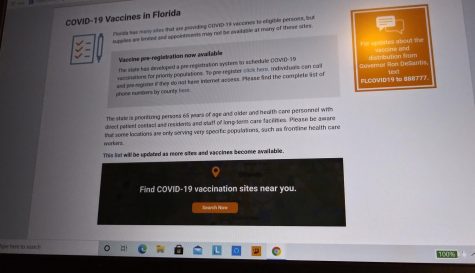
On Florida’s Department of Public Health website, citizens can ‘pre-register for an appointment only if they are eligible for the doses, meaning they are part of the prioritized groups. The website warns that vaccine locales vary on which ‘specific populations’ should receive it [the vaccine].
Florida’s DPH (Department of Public Health) website offers regulated and timely updates on any changes or news relevant to the vaccine distribution. As of now, according to the MHerald COVID-19 vaccine live updates, Florida has administered 1, 294, 225 vaccines to its citizens. The sunshine state’s vaccine plan only expanded as Governor DeSantis announced on February 9th, 2021, that over 490 pharmacies from the businesses such as Publix Super Markets, Walmart and Winn-Dixie will be added to the list of vaccine sites.
The vaccine in question
Vaccines are meant to serve as a treatment against contagious viruses and germs, by building up the bodies immunity against said bacteria in case of future exposure. For many decades, vaccines have been developed and administered during times of pandemics. Currently there are two ‘emergency approved’ vaccines in use for the COVID-19 pandemic; Moderna and the Pfizer – BioNTech vaccine.
The people’s alarm towards the speediness of the vaccine remains valid despite the reasons for why the COVID-19 vaccines were quickly approved. EUA, or Emergency Use Authorization, is the FDA’s (U.S. Food & Drug Administration) approval on ‘medical products’ that will aid and facilitate the public when caught in a health concerning situation.
Vaccines such as Moderna and Pfizer’s were approved for distribution due to their effectiveness and hope in achieving ‘herd immunity’. “The Moderna trail was 30,000 (thirty thousand people). The Pfizer trail was 44,000 people. And it happened to be taken place in the middle of a ferocious outbreak,” said Dr. Fauci in an interview, on how the vaccines were tested. “So, when you’re trying to prove a vaccine works and there are just a few infections here or there in society, it could take seven years.”
According to WebMD.com, herd immunity refers to ‘when a large portion of the population of an area is immune to a specific disease’. “We can pull back on masks when we get such an overwhelming proportion of the population is vaccinated, that there’s herd immunity. Which means that the level of virus is so low that it’s not a threat.” Fauci explains that in order for herd immunity to occur, over 75% to 80% of the population has to be vaccinated.
The vaccine though when taken, doesn’t prevent anyone from spending the virus, meaning individuals who receive it must continue to use masks. Doctor Anthony Fauci explains that in an interview, “It is still conceivable that you can get infected and be asymptomatic, and even though the vaccine protected you from getting sick, it didn’t protect you from getting infected. So, you may not even know that you’re infected and be completely asymptomatic and then spread it to somebody else.”
Student opinion
In an anonymous Google Form Survey given to Coral Springs Charter High School students, the results produced varied from being substantially divided and at times in an agreement on things. On the question on whether students would get the vaccine doses, the answer ‘Maybe’ had the majority rule of over 34.4% signaling that students seem both unsure and wary on committing to receiving the two doses of the COVID-19 vaccine.
In the balance between Yes or No, No weighed more with 28% of students stating they will not receive the vaccine with 21.5% saying they will. And lastly with a reminder of 16.1% saying they’re undecided. Some stating fear in how quickly the vaccine was developed, “With these companies making brand new vaccines within a couple months of testing, I just don’t think it’s right.”
Though, Dr. Fauci reassures that despite how fast it seems the vaccines were developed, it is due to modernity of medical technology. In an interview with YouTube group, The Try Guys, Dr. Anthony Fauci, the current chief medical advisor to President Biden stated, “There was no ‘cutting corners.’ Safety was not comprised. Scientific integrity was not comprised and I think people need to understand that the speed was related completely to the breathtaking scientific advancements that have been made in over the previous ten or more years, where you can get the genetic sequence of the virus which then take that sequence and it insert the appropriate gene into these very new and unbelievably efficient vaccine platforms and that didn’t sacrifice any safety at all. That was purely a technological advance.”
Dr. Fauci amongst hundreds of others in the scientific community reassure that from a medical standpoint it is ‘historical’ to obtain a working vaccine for such a fast-spreading virus as is the COVID-19 pandemic. The vaccines are safe regardless.
Other students agree on the safety of the vaccine. “I believe it’s safe and it’s the best option to prevent the spread of the virus.”
On how Florida is handling the vaccine distribution, majority of students agreed with how Florida has handled it so far and which crowds of people Florida is prioritizing such as the elderly over 65 and healthcare workers. Over 73.1% of students support the plan with a 17.2% in disagreement with it and a 9.7% undecided.
Vaccine distribution in other states
Georgia
January 20 marked the one-year anniversary of the first confirmed case of COVID-19. Since then, the United States has been rolling out vaccines to its citizens, each state slightly differing in its distribution management. Georgia, for example, has structured a ‘plan’ consisting of three phases, as seen on Georgia’s Department of Public Health website.
Georgia’s vaccine administration is currently in the beginning stage, Phase 1A+, where vaccines are being distributed to healthcare workers of nearly all fields from physicians to those employed or living at a ‘long-term care facility’, the elderly over 65 and first responders. Vaccines are being provided through appointment only as the state like the many others in our country face a shortage of supplies.
The state plans to follow through with their vaccine distribution, commencing with phases 1B, where non-essential workers will be prioritized, and 1C, where any citizen from the ages 16 – 64 with medical conditions or is at risk, once Phase 1A+ has concluded.
As of now, the State of Georgia has successfully vaccinated over 1,688,605 of its citizens and residents, with the accumulated numbers of Pfizer vaccines shipped, 633, 750, and Moderna at 919, 700.
California
California, whose counties like Los Angeles and Riverside have been faced with increasing COVID cases by thousands, has formulated a similarly structured plan consisting of two phases where the different populaces of California are divided up. Currently in Phase 1A, California is prioritizing healthcare workers and ‘long-term care residents.’ As the demand for vaccines is high across the board, California has enacted their second phase, Phase 1B, where if ‘vaccine supply allows’, persons over 65, workers in the following fields of education, food & agriculture, and emergency services, may get vaccinated.
Citizens are instructed on the California Department of Public Health website to sign up or see if they are eligible to receive the vaccine at a specific telephone number. The state has so far administered about 6, 929, 954 vaccines, around half of the 8, 828, 480 of vaccines delivered to the state.
On both state’s Department of Public Health pages, information on the vaccine is provide citizens in a clear and understanding manner. The websites implore citizens to follow CDC guidelines when at either testing sites or vaccine locations, in hopes of minimizing the spread. Finally, to clear up misinformation and provide reassurance to the state’s public, there are attached FAQ’s, frequently asked questions, for citizens to know that the vaccine is safe to take and what to except/do after receiving the vaccine doses. As well as a ‘Vaccine progress chart’ to keep citizens informed on the track of vaccines being administered.



